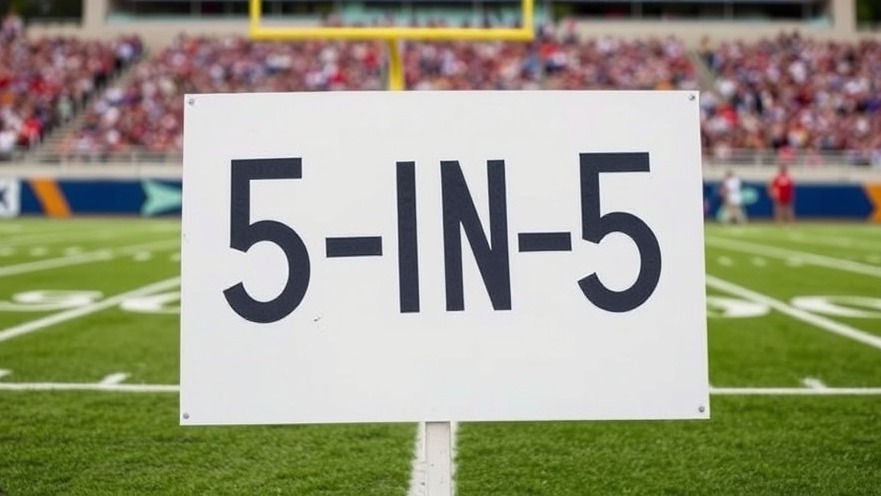
Understanding the 5-in-5 Rule in College Sports
The 5-in-5 rule, which allows college athletes to transfer once without penalty, is poised to redefine the landscape of college sports. Imagine a world where student-athletes no longer have to sit out a year after transferring – they can play immediately! This radical shift could encourage more players to explore new opportunities and increase competition across programs.
In The 5-in-5 rule could change the landscape of college sports?, the discussion dives into the fresh dynamics of player transfers, exploring key insights that sparked deeper analysis on our end.
The Impact: More Movement, Less Stability?
While the flexibility offered by the 5-in-5 rule benefits athletes, it poses questions about program stability. Coaches invest time and resources into recruiting players, only for them to leave shortly after. This movement could result in a transient roster, making team chemistry a challenge. Programs might have to adapt their recruiting strategies to build stronger relationships and maintain continuity.
What This Means for College Rivalries
Rivalries, a foundational element of college sports, may change with the 5-in-5 rule. Players frequently switching teams can dilute the intensity of long-standing rivalries. Fans often develop emotional connections with players, and a revolving door of athletes might lead to a disconnect. However, the flip side is that fresh talent could spark new rivalries and revitalize competitions.
Future Predictions: The Changing Face of College Sports
The dominant narrative in college sports could move towards a more player-centric approach. The traditional notions of loyalty and commitment may fade as athletes prioritize personal growth and opportunities. This mindset shift can lead to unprecedented levels of movement within programs, reconfiguring conferences and the entire structure of college athletics.
Emotional Perspectives on Player Mobility
For many fans and stakeholders, the 5-in-5 rule may evoke mixed feelings. On one hand, the rule supports athlete autonomy, allowing them to pursue better opportunities. On the other hand, it can breed skepticism and frustration among those loyal to their programs. The emotional tug-of-war between supporting athletes and maintaining loyalty to teams will definitely influence how college sports are perceived.
The Sociocultural Dynamics at Play
The implications of the 5-in-5 rule also ripple into broader social dynamics. Student-athletes today grapple with more than just physical training; they are navigating a world rife with business decisions, social media challenges, and personal branding. As athletes are given more agency, their role in influencing college sports’ cultural identity becomes more pronounced.
What's Next for College Football Rankings?
Given the potential influx of talent transfers, college football rankings could be significantly affected. Each transfer, especially of star players, alters the competitive landscape and predictions for upcoming seasons. As the environment shifts, fans can expect fluctuations in how teams are evaluated, paving the way for underserved programs to shine.
Concluding Remarks: A Call for Seasoned Perspective
With the introduction of the 5-in-5 rule, observers of college sports should remain vigilant and adaptive. Changes coming from the NCAA may resonate for years to come, reshaping everything from NCAA recruiting updates to college basketball news and the Heisman Trophy race. As new developments unfold, fans and analysts alike must rethink how they perceive athletic commitment and opportunity in this evolving landscape.
Are you ready to keep up with these changes? Stay tuned for updates on college sports rankings, NCAA recruiting updates, and more to see how this could shape the future of your favorite college teams!
 Add Element
Add Element  Add Row
Add Row 



Write A Comment